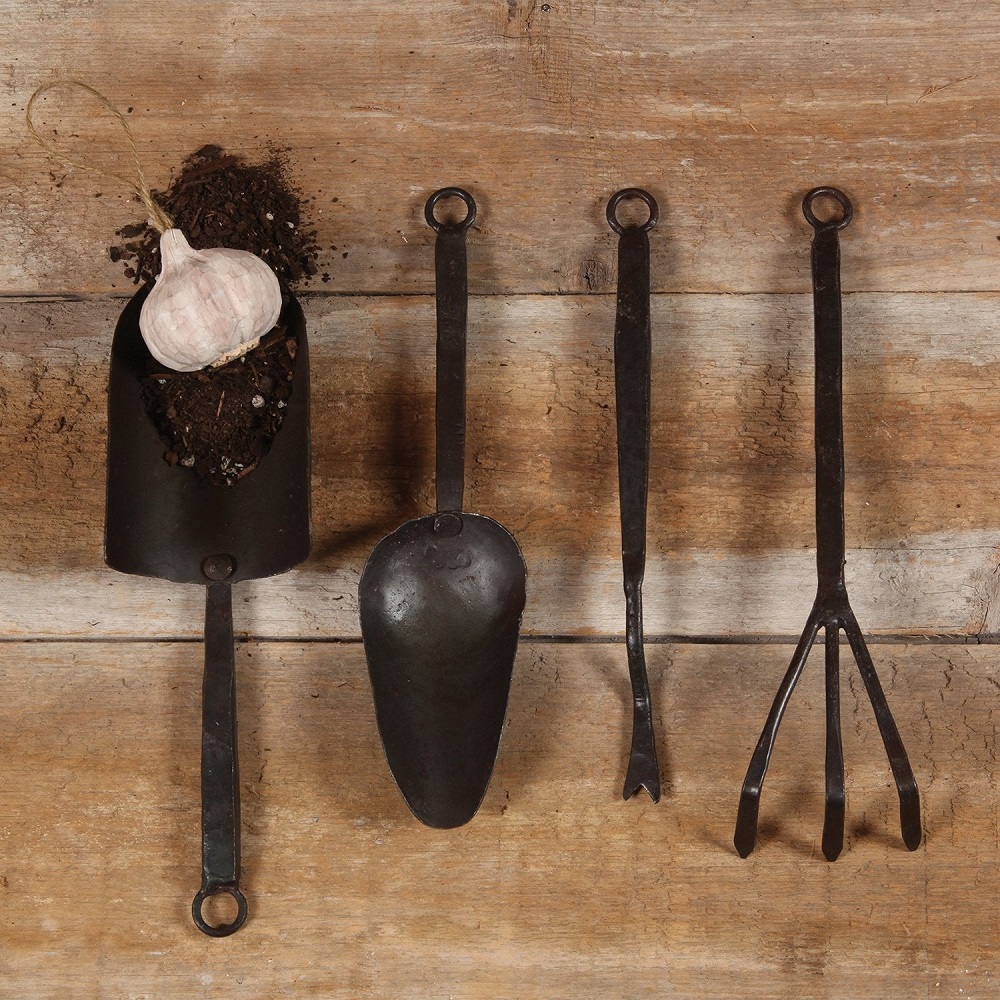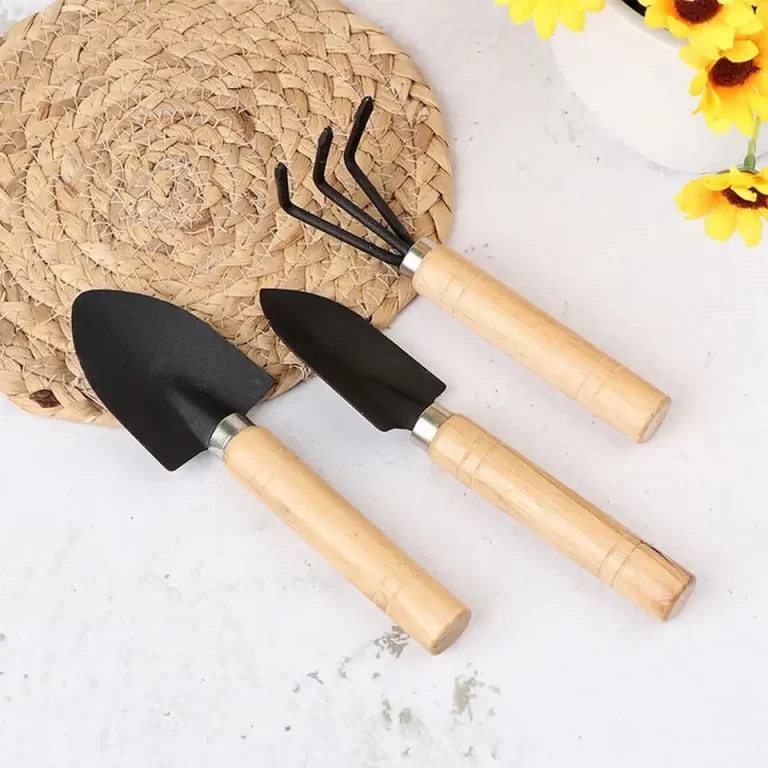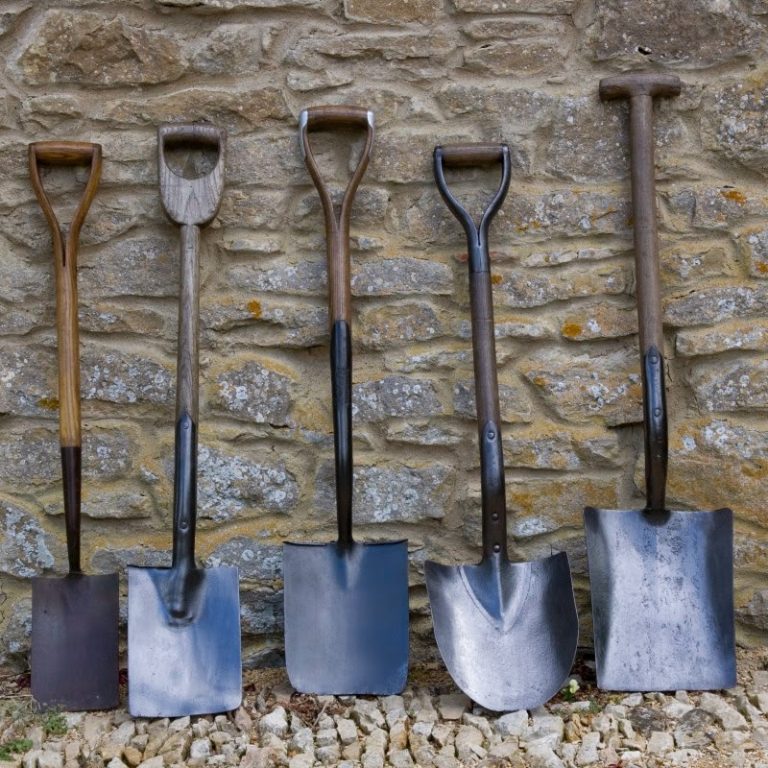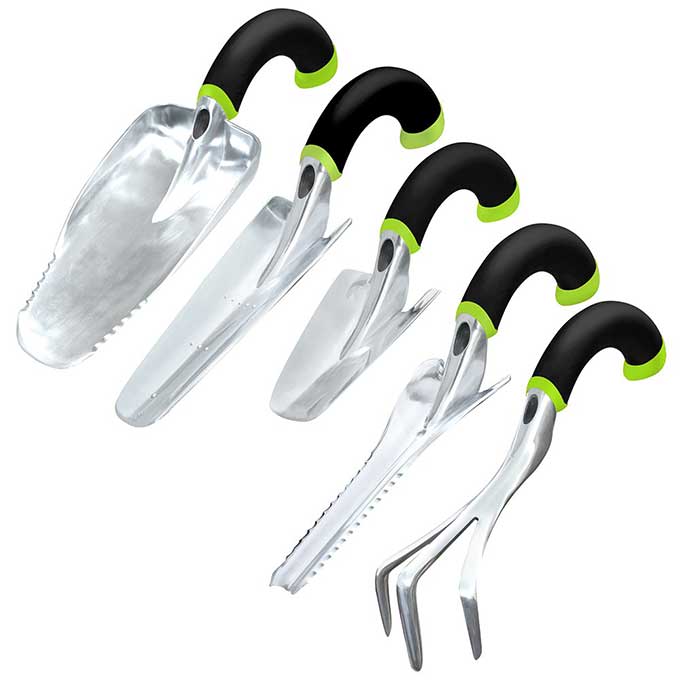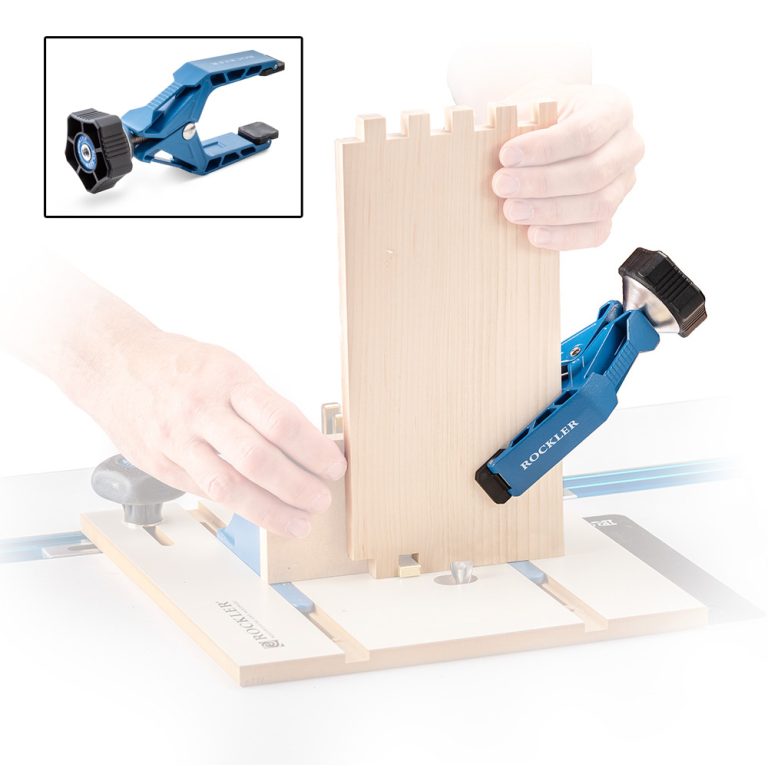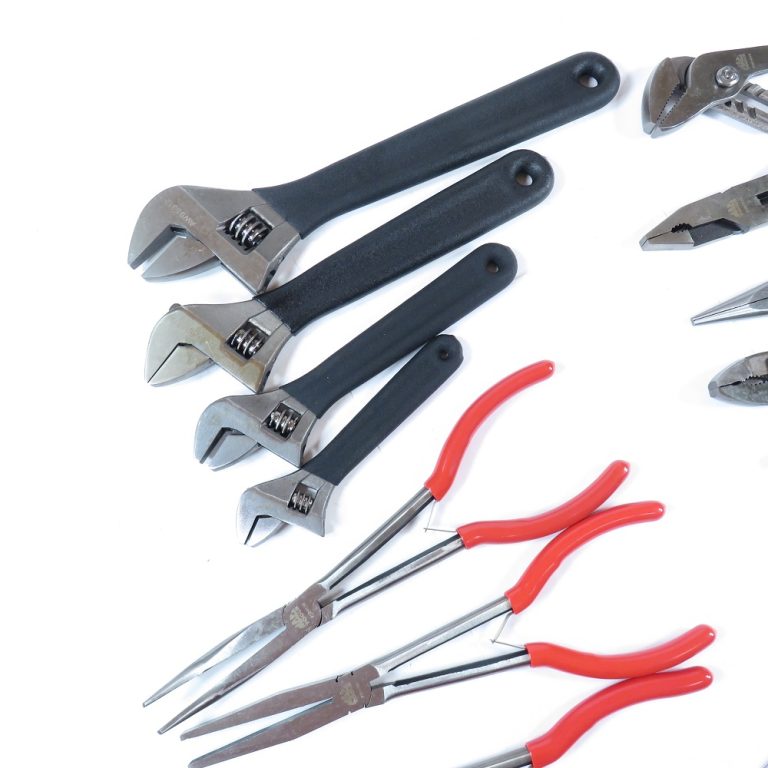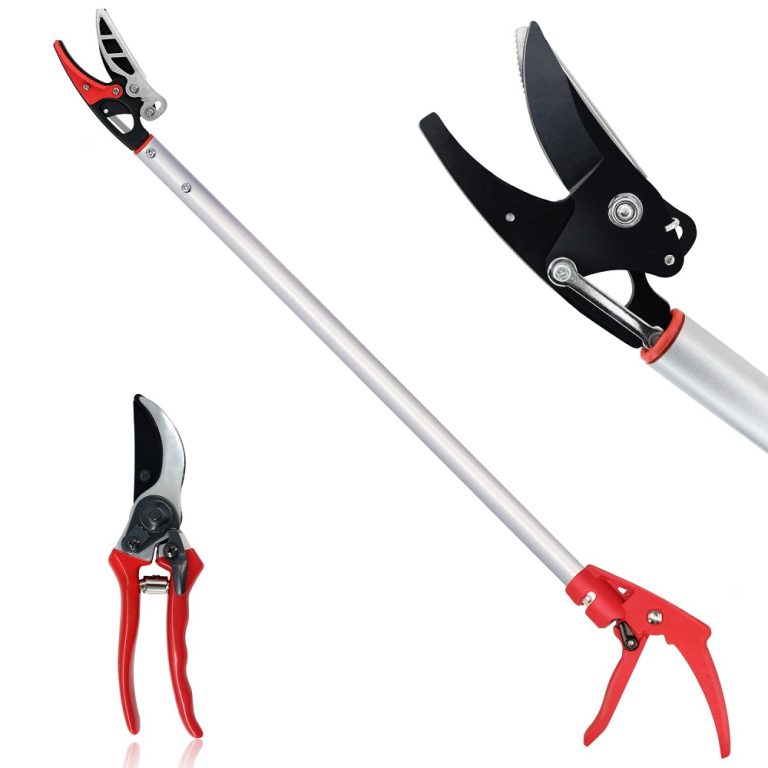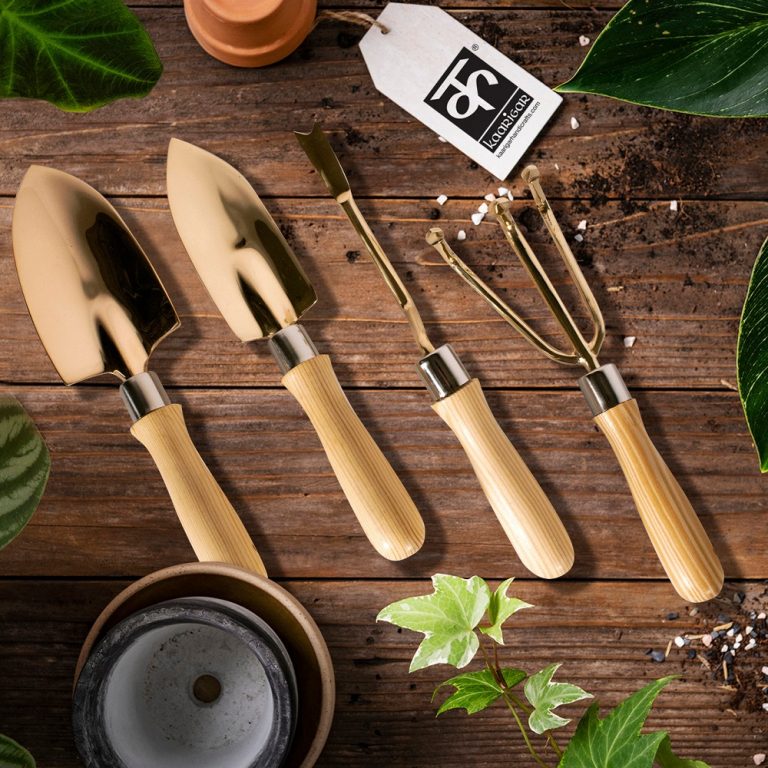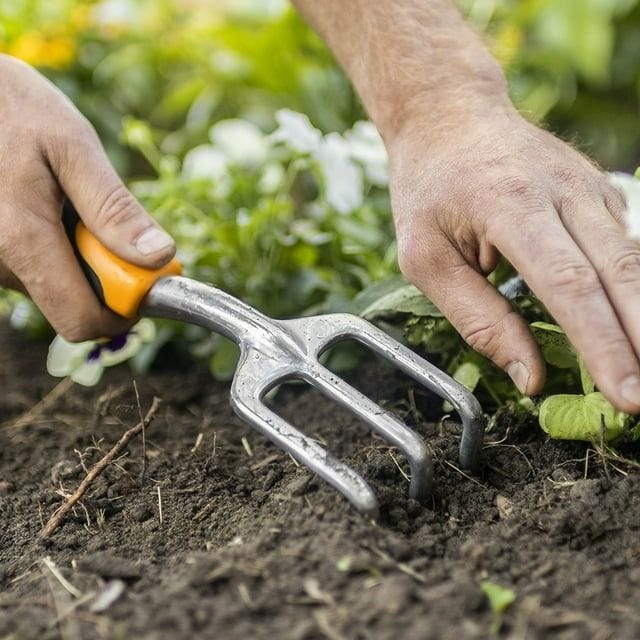Introduction to Antique Garden Tools
Antique garden tools provide a fascinating glimpse into the evolution of gardening and agriculture. These tools were essential for planting, cultivating, and maintaining gardens and farms. Collectors and gardening enthusiasts treasure them for their historical value and craftsmanship.
What Defines Antique Garden Tools?
Antique garden tools are typically over 50 years old. They reflect the designs and materials of their time. These tools were often handcrafted, making each piece unique. Common materials include wood, wrought iron, and early forms of steel. Their designs, functionality, and wear patterns help identify their age and origin.
Historical Importance of Garden Tools in Agriculture and Horticulture
Garden tools played a key role in developing agriculture and horticulture throughout history. Early tools helped civilizations move from hunting to farming. Innovations in tools mirrored advancements in farming methods. For example, plows and hoes supported large-scale crop production, while pruners and trowels aided ornamental gardening. Historical garden tools reveal the ingenuity and craftsmanship of past societies.
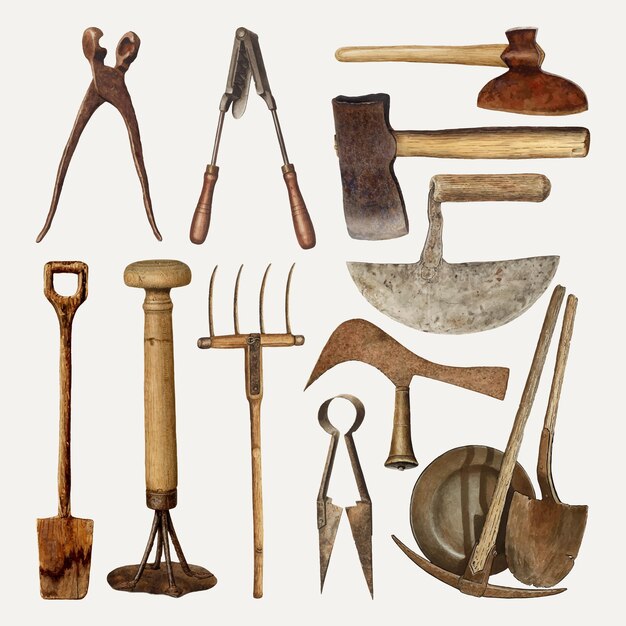
Types of Antique Garden Tool
Antique garden tools come in various shapes and sizes, with unique purposes for gardening.
Hand Tools: Trowels, Hoes, and Pruners
Hand tools like trowels, hoes, and pruners were essential in past gardening tasks. Trowels helped in planting, scooping, and digging small holes. Hoes were used for cultivating soil and removing weeds effectively. Pruners served to trim bushes and branches, ensuring healthy plant growth. These tools are often intricately designed and showcase the craftsmanship of earlier eras.
Large Equipment: Plows and Cultivators
Large equipment, such as plows and cultivators, was vital for farming and large-scale gardening. Plows were used to break and turn the soil, making planting easier. Cultivators helped prepare soil and remove weeds between rows of crops. These larger tools often featured durable materials like wrought iron, ensuring their longevity.
Specialized Tools for Unique Gardening Tasks
Some antique garden tools were designed for specialized tasks, catering to specific needs. Examples include seed drills for precise planting and dibbers for creating uniform holes. Other tools, such as watering cans or garden rollers, were used for maintaining gardens. These specialized tools highlight the ingenuity of gardening practices in history.
Materials and Craftsmanship of Antique Garden Tool
Understanding the materials and craftsmanship of antique garden tools can reveal their historical significance. These tools were made using durable materials and meticulous techniques, showcasing the ingenuity of past artisans.
Wood, Metal, and Their Durability Over Time
Most antique garden tools were constructed from wood and metal. Wooden handles were often made from hardwoods like ash, oak, or hickory. These woods provided strength and a comfortable grip for intensive gardening tasks. Metal parts typically included wrought iron or early forms of steel. Wrought iron was favored for its malleability and resilience, making it ideal for tool shaping. Steel brought added durability and sharpness, evolving later for precision tasks.
Over time, these materials displayed impressive durability. Wood developed weathered patinas, making tools visually appealing. Metal components could resist wear, although rust was common without maintenance. This blend of materials contributed heavily to the tools’ long-lasting nature.
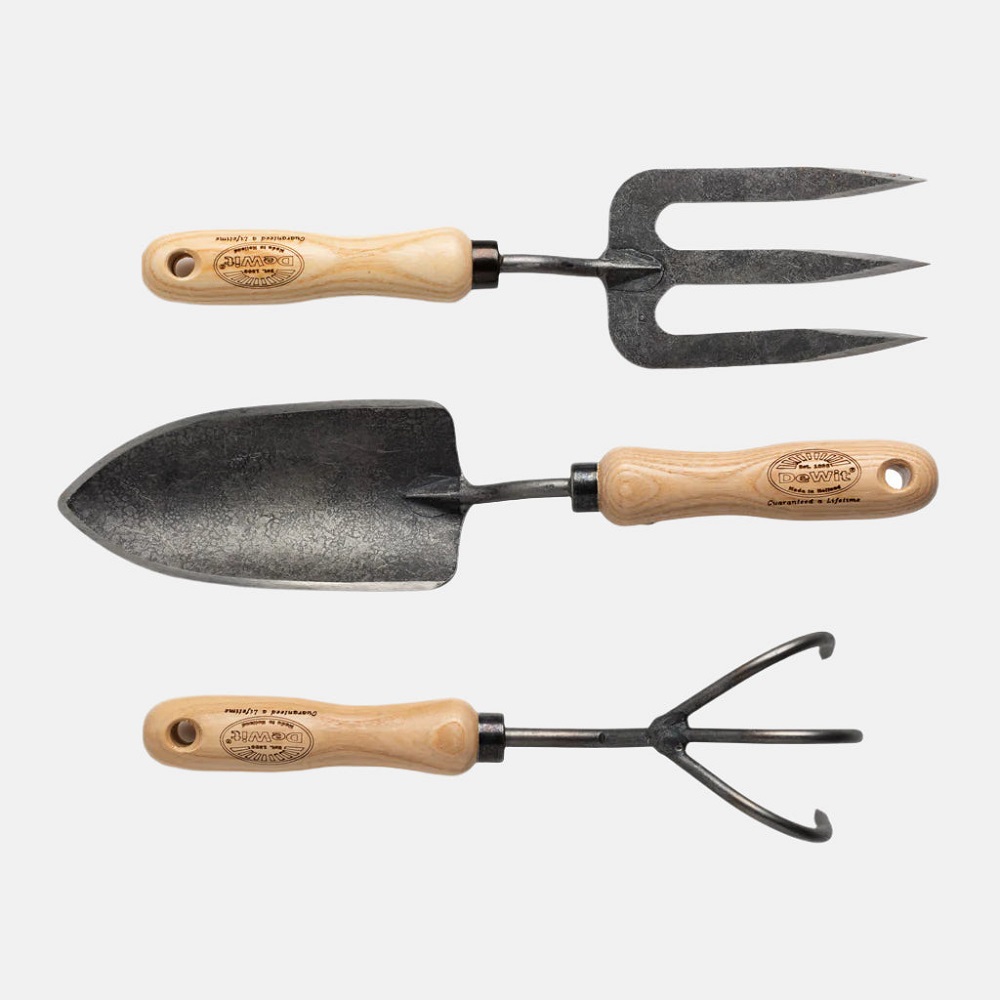
Handcrafted Versus Mass-Produced Tools
Handcrafted antique garden tools reflect the artistry of earlier eras. Skilled blacksmiths and carpenters crafted tools with attention to detail and functionality. Each piece was unique, featuring hand-forged metal and carefully carved wooden handles. These tools often showcased ornate designs and personalized elements.
During industrialization, mass-produced tools became more common. Factories manufactured tools with standardized designs and cheaper materials. While less detailed, these tools increased availability and reduced costs. Collectors tend to prioritize handcrafted tools for their historical and artistic value.
Craftsmanship and materials are key factors in assessing antique garden tools. They highlight the evolution of gardening practices and the ingenuity behind earlier tool-making methods.
Identifying and Dating Antique Garden Tool
Identifying and dating antique garden tools requires careful observation and knowledge. Recognizing specific features, markings, and styles can reveal the age and origin of these tools. This section provides insights into key elements to examine when studying antique garden tools.
Key Features to Look For
- Materials Used: Antique garden tools often feature wood and metal, such as wrought iron or steel. The type and condition of these materials can provide clues about their era.
- Design Details: Handcrafted tools often include intricate designs, unique shapes, and functional innovation. Commonly, mass-produced tools from later periods have simpler and standardized designs.
- Wear Patterns: Examine signs of usage, like scratches or patinas, which develop over years of handling. These patterns help identify the tool’s age.
- Construction Methods: Tools made before industrialization often show hand-forged elements. Machine-made tools are more uniform and may signal later production.
Recognizing Maker’s Marks and Logos
Maker’s marks and logos are critical for identifying antique garden tools.
- Stamped Logos: Many older tools feature stamped logos, often indicating the manufacturer. These stamps can reveal the tool’s origin and historical context.
- Engravings: Engravings of names, initials, or workshop details are common on handcrafted tools. Look for faded or partial engravings as clues.
- Symbols or Emblems: Certain era-specific symbols or emblems help date tools accurately. Researching these marks can trace tools to specific periods or regions.
Common Styles Across Historical Periods
- Early Designs: Tools from the 18th and early 19th centuries often were simple and utilitarian. Wooden handles paired with iron blades were common.
- Victorian Era: Victorian tools often featured ornate designs and improved functionality. Innovations in steel allowed for thinner and sharper tools.
- Industrial Age: During industrialization, tools became standardized, with simpler designs and cheaper materials.
By identifying key features and understanding historical styles, collectors can accurately determine the origin and value of antique garden tools.
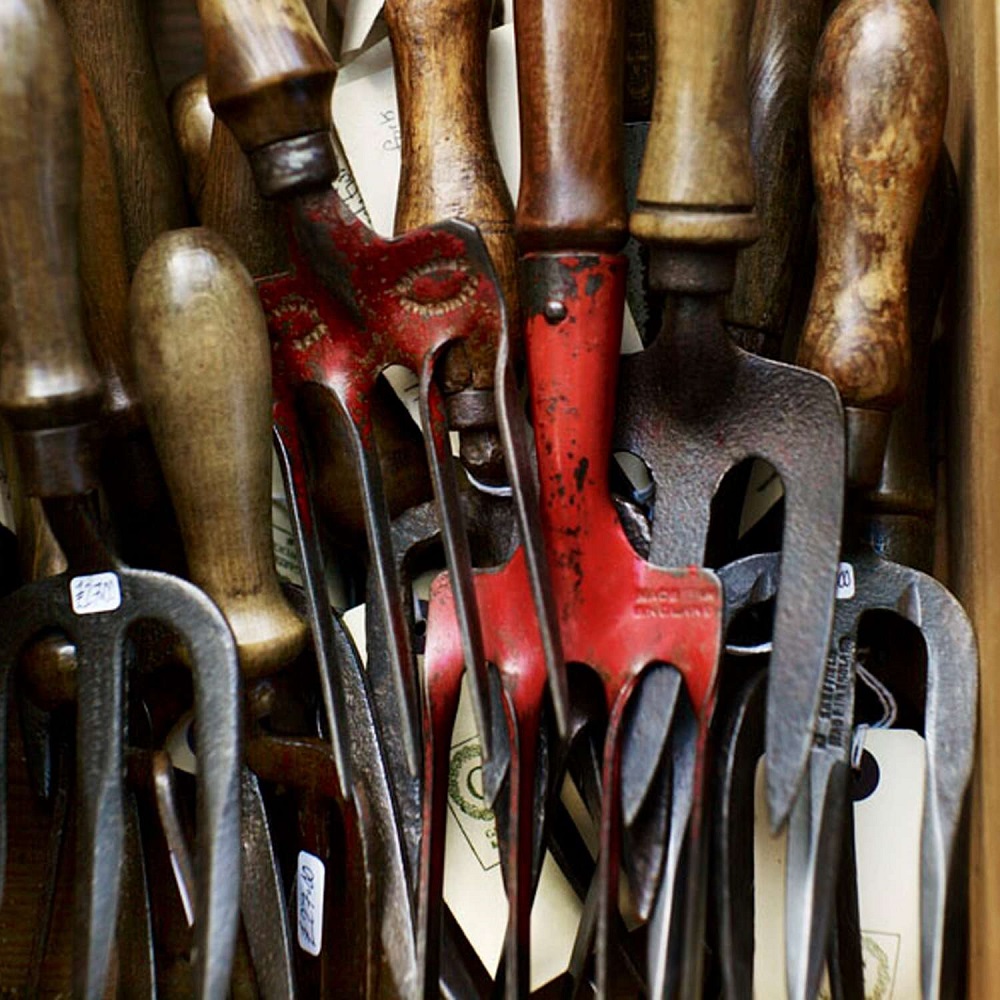
Collecting Antique Garden Tool
Collecting antique garden tools is a rewarding hobby for history and gardening enthusiasts. These tools showcase craftsmanship, innovation, and provide a tactile connection to gardening’s rich past.
Where to Source Antique Garden Tools
Finding antique garden tools requires effort and knowledge. Here are common sources where collectors search:
- Flea Markets: Flea markets often have a variety of antique items. Tools may appear among vintage pieces.
- Garage Sales: Local garage sales can be a haven for finding aged tools at bargain prices.
- Online Platforms: Sites like auction platforms and marketplaces list antique tools regularly.
- Antique Shops: Specialized stores may stock rare and well-preserved garden tools.
- Estate Sales: Estates often carry tools used over decades, adding historical appeal.
Exploring these places requires patience, research, and a keen eye for identifying authenticity.
Tips for Evaluating Tool Conditions and Rarities
Determining a tool’s condition and rarity is an essential skill for collectors. Follow these steps:
- Inspect Materials: Check the wood and metal for wear, patinas, or rust.
- Look for Maker’s Marks: Identify engraved logos or stamps indicating origin.
- Assess Functionality: Test moving parts like hinges or handles for smooth operation.
- Analyze Designs: Decorative or unique designs suggest higher value or rarity.
- Research History: Trace periods and regions where tools were made.
A careful evaluation helps confirm authenticity and avoid purchasing faulty items.
Popular Tools Among Collectors
Some tools are highly sought after due to their uniqueness or design intricacy:
- Victorian Hand Tools: Ornate pruners or trowels with elegant decorations are collector favorites.
- Early Plows: Wooden plows with iron components have historical significance and charm.
- Seed Drills: Innovative tools for precision planting attract those interested in agricultural history.
- Garden Rollers: Heavy rollers, often made with wrought iron, serve both practical and aesthetic purposes.
Collectors admire these tools for their beauty, functionality, and historical insights.
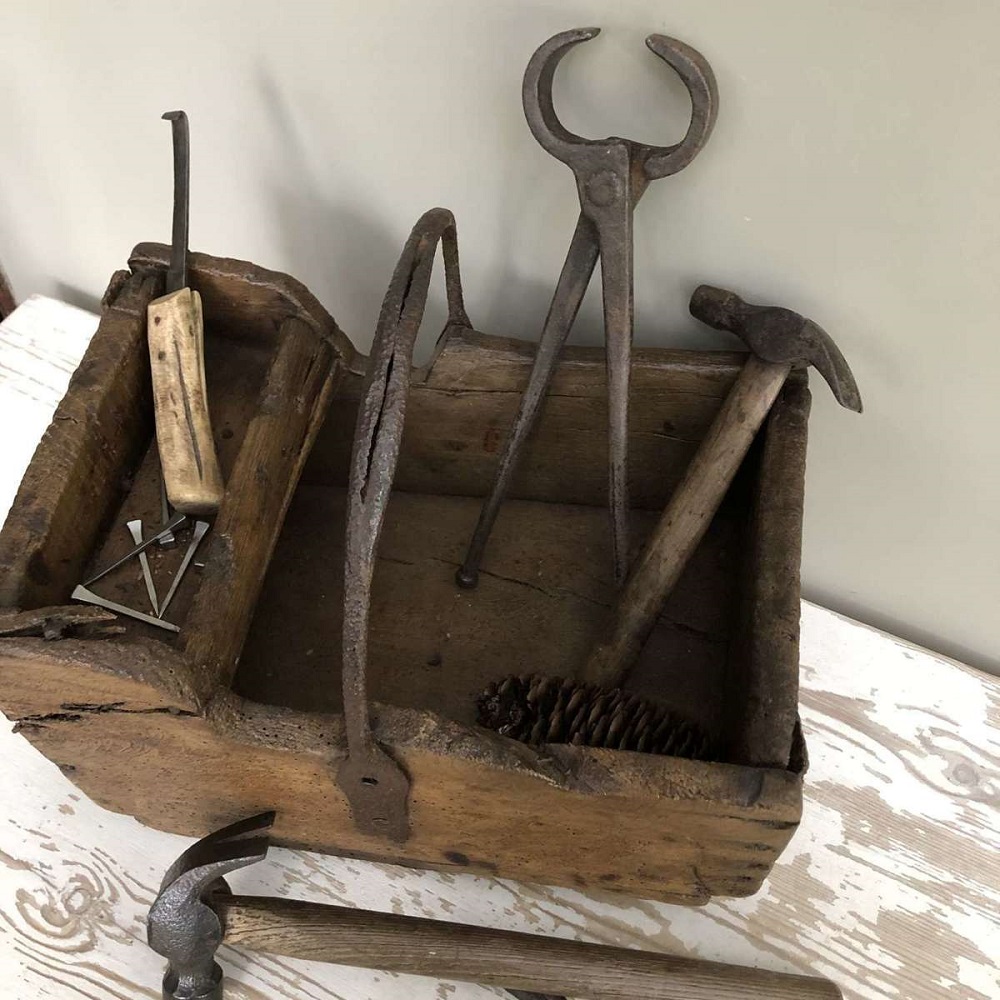
Preserving and Restoring Antique Garden Tool
Preserving antique garden tools ensures their longevity and maintains their historical significance. Proper care prevents damage.
Cleaning Techniques for Different Materials
- Wood: Use a soft brush to remove dirt. Apply mineral oil to protect and restore luster.
- Metal: Remove rust with a wire brush or sandpaper. Wipe with oil to prevent further rust.
- Brass and Copper: Use a paste made from vinegar and salt. Rinse and polish with a clean cloth.
- Rubber or Leather: Wipe with a damp cloth. Apply appropriate conditioners to maintain flexibility.
Never soak tools for too long. Avoid harsh chemicals that could damage materials.
Tools and Supplies for Restoration Work
Restoring tools requires specific supplies and equipment. Some essentials include:
- Wire Brushes: Use for cleaning rust and dirt from metal surfaces.
- Sandpaper: Sand rough or rusted areas on metal or wood gently.
- Rust Removers: Use safe products to dissolve existing rust without harming the tool.
- Wood Conditioners: Oils like linseed or mineral revive wooden handles.
- Metal Polishes: Use these for shining and protecting metal parts.
- Protective Gear: Wear gloves and safety goggles during restoration tasks.
Having these on hand ensures smooth and effective restoration.
Best Practices for Long-Term Preservation
- Store Properly: Keep tools in a dry, cool place to avoid moisture and rust.
- Regular Maintenance: Clean tools after use and inspect for wear or damage.
- Apply Protective Coatings: Use wax or oil on metal parts to guard against oxidation.
- Avoid Heavy Use: Limit handling or use to preserve original designs and materials.
Restored and well-preserved tools remain valuable and visually appealing for generations.
The Value of Antique Garden Tools
Antique garden tools hold more than just historical significance. They also have considerable monetary value for collectors and enthusiasts. Understanding what makes them valuable can help collectors manage and showcase their collections effectively.
Factors That Influence Their Market Value
Several factors determine the value of antique garden tools:
- Age and Rarity: Older tools or those with unique designs are usually more valuable.
- Condition: Tools in good condition, with minimal rust or damage, fetch higher prices.
- Craftsmanship: Hand-forged tools often have more value due to their intricate details.
- Maker’s Marks: Tools with visible logos, stamps, or engravings can indicate authenticity and boost value.
- Historical Relevance: Tools linked to specific time periods or gardening advancements attract more interest.
- Demand: Popular tools among collectors, such as Victorian pruners, often have higher prices.
How to Appraise Your Collection
Appraising antique garden tools accurately requires a thorough approach. Follow these steps:
- Research Similar Items: Compare your tools with similar ones listed in online marketplaces or auction catalogs.
- Consult Experts: Reach out to antique appraisers or seasoned collectors for reliable evaluations.
- Refer to Guides: Use antique appraisal guides to understand pricing trends.
- Inspect Markings: Check for maker’s marks and their significance in determining value.
- Assess Condition: Examine the tool’s wear, patina, and functionality to estimate its worth.
Documentation and professional opinions add credibility when determining the value of your collection.
Selling and Auctioning Antique Garden Tools
When selling or auctioning tools, planning and presentation play critical roles:
- Online Marketplaces: Use platforms specializing in vintage or antique tools for wider reach.
- Antique Dealers: Partner with dealers who understand the niche market of garden tools.
- Auction Houses: List rare or high-value items in auctions, where enthusiasts bid competitively.
- Tool Shows or Events: Attend antique tool fairs or events to engage directly with collectors.
- Set Competitive Prices: Research market trends to price tools appropriately.
When selling, always include detailed descriptions and photos showcasing unique features. Transparency about a tool’s condition builds trust and attracts serious buyers.
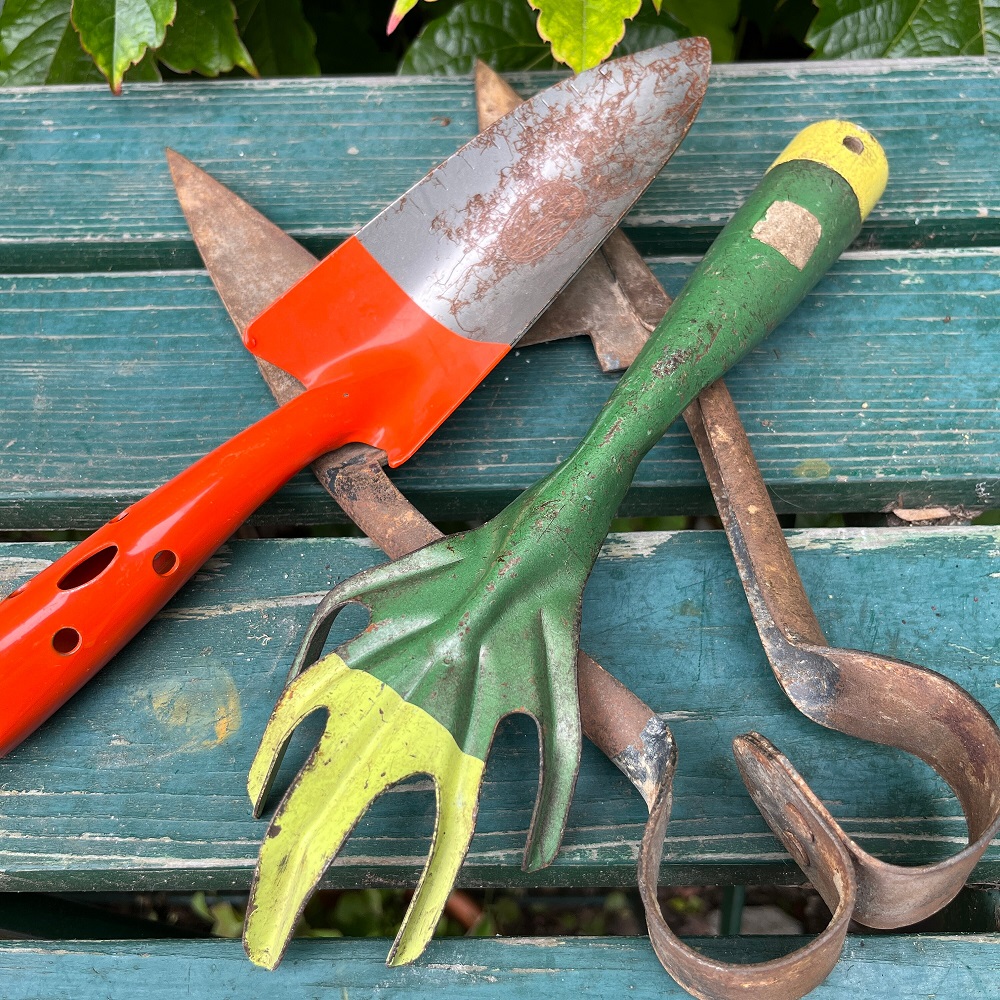
Displaying Antique Garden Tool
Antique garden tools are more than functional pieces; they are conversation starters and decorative treasures. Displaying them creatively can highlight their historical charm while enhancing your living spaces.
Creative Ideas for Indoor Displays
- Wall Art: Mount tools like pruners or trowels on walls for a rustic look.
- Shadow Boxes: Use shadow boxes to create miniature museum-like displays for smaller tools.
- Shelving Displays: Place tools on open shelves alongside books or plants to merge functionality and design.
- Table Centerpieces: Combine tools with floral arrangements for elegant, garden-inspired decor.
- Frame Collections: Pin tools inside frames to preserve designs and add visual appeal.
Using these ideas can turn antique tools into unique indoor decor accents.
Using Tools as Outdoor Décor
- Garden Sculptures: Arrange larger tools like plows creatively for striking garden sculptures.
- Fence Art: Hang tools on outdoor fences for a vintage touch.
- Tool Planters: Repurpose watering cans or rollers into garden planters.
- Pathway Markers: Use tools as decorative markers for garden paths.
- Patio Decor: Showcase grouped tools on patios to enhance outdoor seating areas.
Outdoor displays highlight the timeless beauty and utility of antique garden tools.
Inspiring Examples from Enthusiasts
- Vintage Wall Displays: Collectors hang tools in kitchens or mudrooms for a farmhouse vibe.
- Tool-Wrapped Trees: Enthusiasts tie tools around garden trees for whimsical outdoor art.
- Museum-Like Gardens: Some create themed gardens with tools marking different historical periods.
- Rustic Barn Decor: Tools arranged in barns evoke a nostalgic countryside feel.
- Seasonal Table Settings: Decorators use tools for festive displays during gardening seasons.
These examples inspire collectors to showcase antique garden tools creatively. Their charm enriches both indoor and outdoor spaces.
